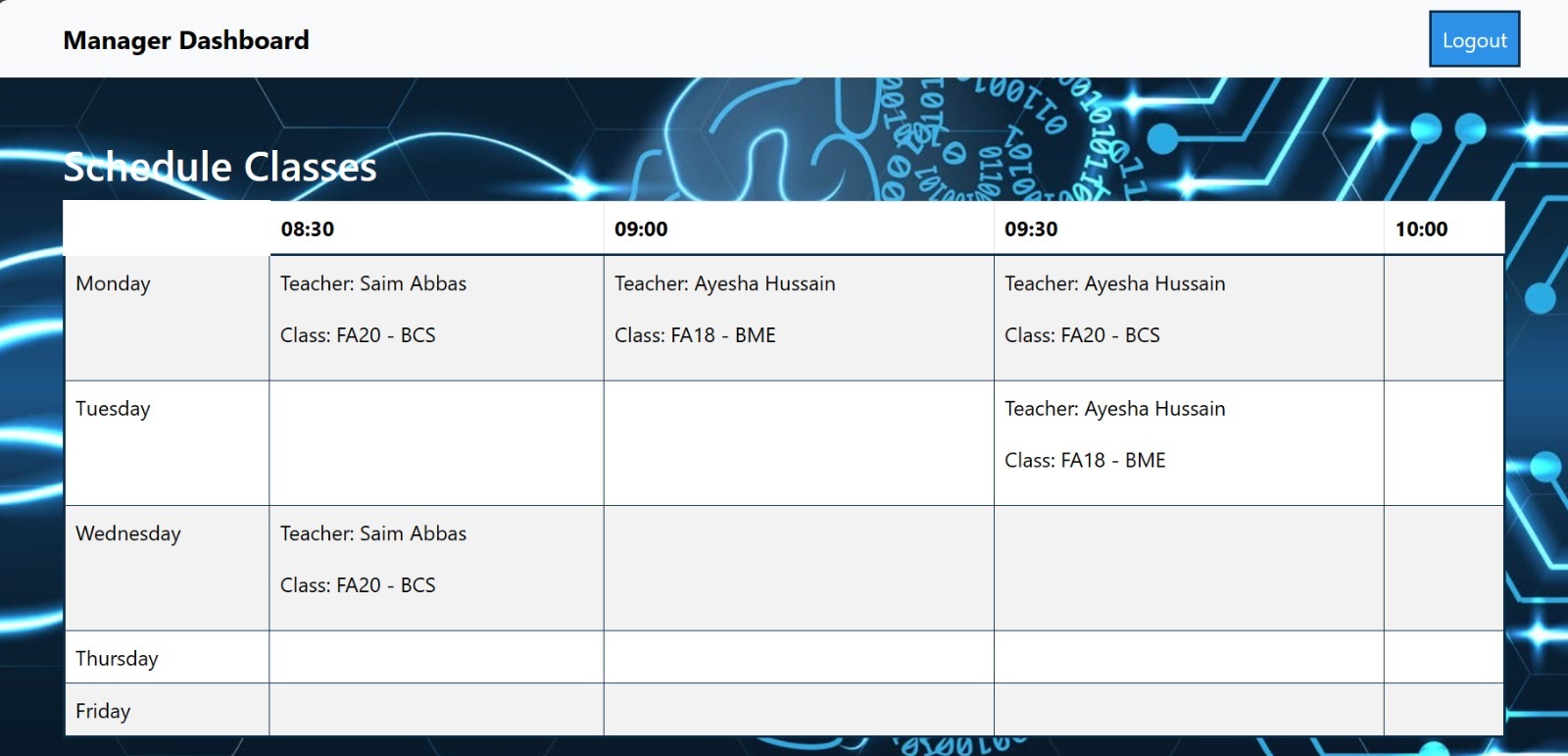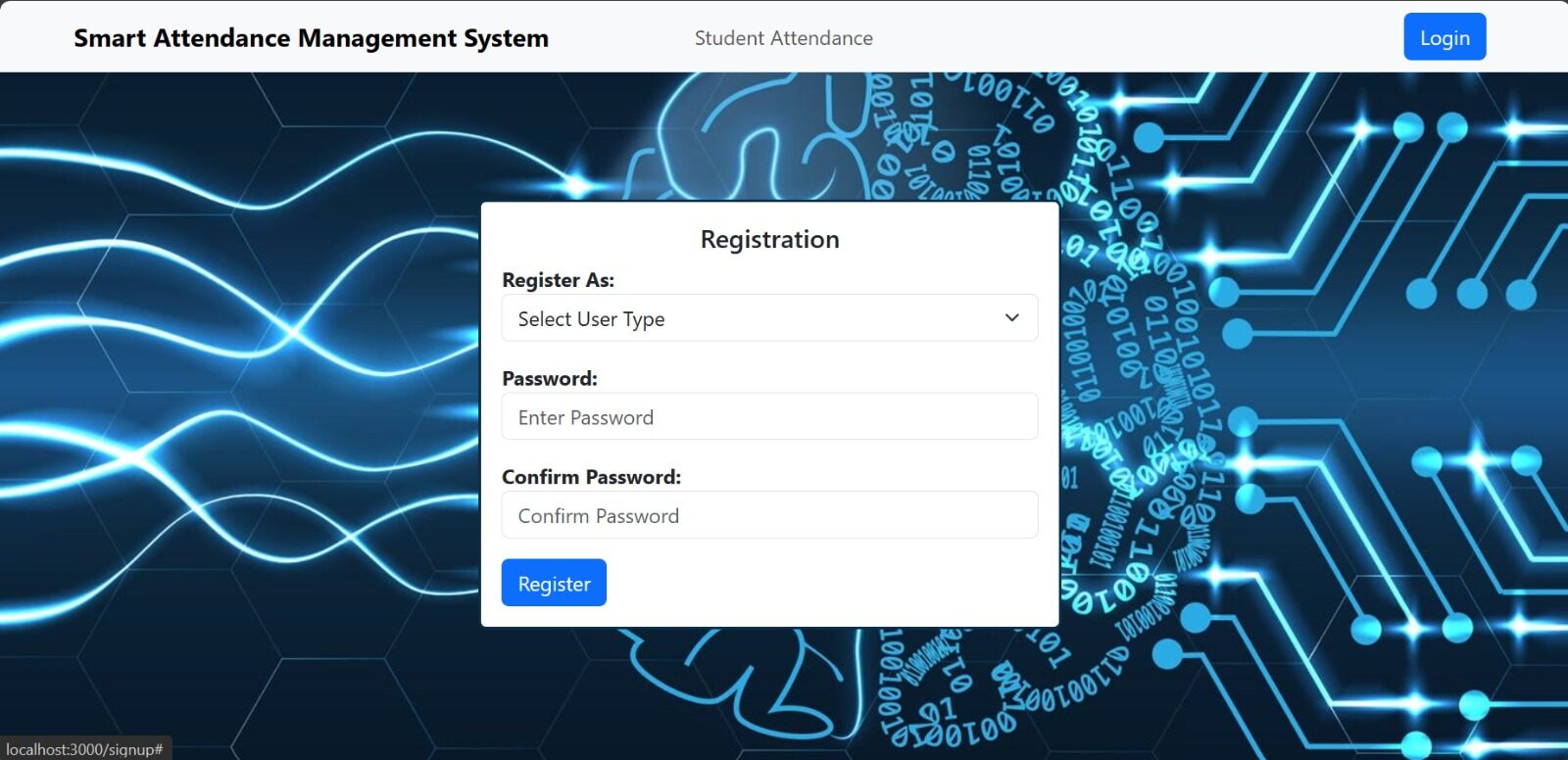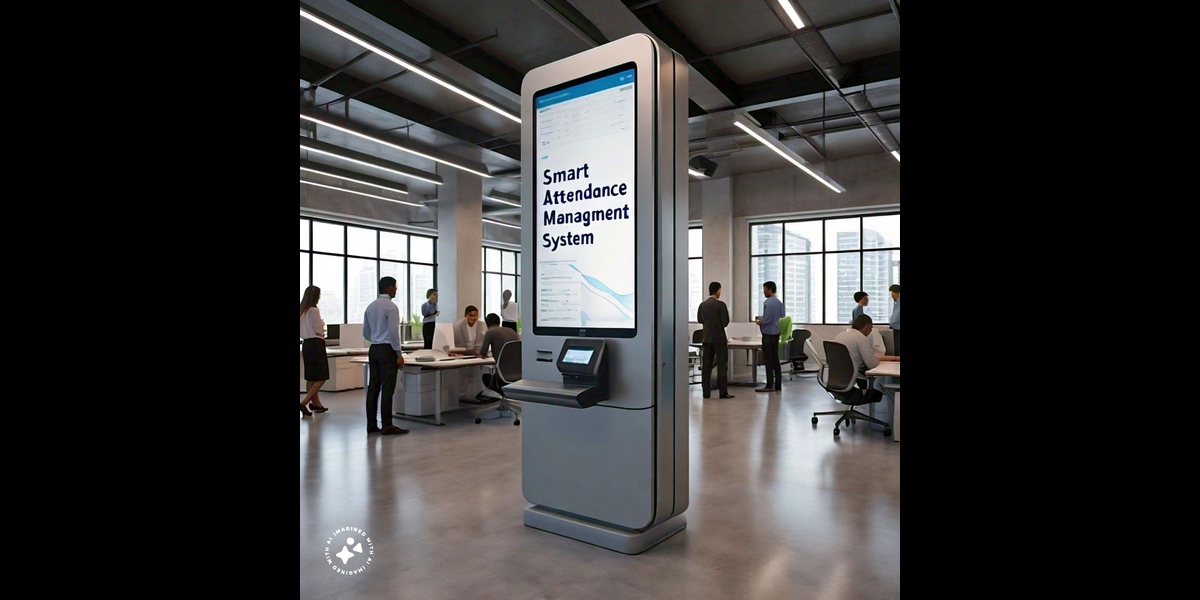The Smart Attendance Management System with Fake Attendance Detection is a cutting-edge solution integrating RFID technology, digital cameras, and face detection algorithms for accurate attendance tracking. It comprises three modules: • Hardware• Website Development• Mobile App Development Teachers, coordinators, and department heads can manage attendance data via the web interface, while students access their attendance details and receive alerts through the mobile app. The system ensures accuracy by validating entries, employing face detection for student verification, and applying fake detection algorithms for teachers. It operates on major operating systems, supports standard web browsers, and interacts with hardware components via APIs. Overall, it revolutionizes attendance tracking in educational institutions, enhancing efficiency, accountability, and transparency.
Objectives
• Accurate Attendance Tracking: Ensure precise and reliable recording of both student and faculty attendance using RFID cards and digital camera integration.
• Visual Verification for Enhanced Security: Implement a visual verification system through the integration of digital cameras to authenticate the identity of individuals entering the classroom, adding an extra layer of security.
• Fake Attendance Prevention: Utilize advanced algorithms, including chair count validation and face detection, to identify and prevent fake attendance entries for both students and teachers.
• Automated Student Attendance Validation: Develop an algorithm that periodically checks student attendance during class sessions, incrementing attendance time for present students and applying penalties for consecutive absences to maintain accuracy.
• Teacher Attendance Monitoring: Implement a system to monitor teacher attendance by running face detection algorithms after a specified interval, deducting class time for consecutive absences to ensure faculty presence.
• Weekly Attendance Lock: Secure attendance records on a weekly basis to enhance data integrity and streamline administrative processes.
• Coordination and Reporting: Provide departmental coordinators and Heads of Departments (HODs) with the ability to view and manage both teacher and student attendance. Generate attendance reports for faculty.
• User-Friendly Panels: Develop distinct panels for teachers, coordinators, and department heads, ensuring ease of use and accessibility for each user category.
• Mobile App Integration: Create a mobile application exclusively for students, allowing them to view attendance details, receive automatic alerts for low attendance, and synchronize data securely with the website.
• Automatic Alerts for Students: Implement an alert system that notifies students if their attendance in any subject falls below 80%, promoting proactive engagement and attendance improvement.
• Integration of Hardware Components: Integrate hardware components such as RFID, digital cameras, face recognition modules, and display screens to create a comprehensive and cohesive attendance management system.
• Real-time Data Retrieval: Establish a backend system for storing class schedules and room assignments, ensuring real-time data retrieval for display on the screen through the microcontroller.
• Website Development: Create distinct panels for teachers, coordinators, and department heads on the website, allowing for manual attendance marking, viewing attendance details, and coordination.
• Cross-Platform Coordination: Ensure seamless coordination between the website and the mobile app through the development of APIs, facilitating the secure and efficient exchange of student attendance data.
Socio-Economic Benefit
• Enhanced Efficiency: The system streamlines attendance tracking processes, reducing administrative burden and allowing educational institutions to allocate resources more efficiently.
• Cost Savings: By automating attendance management and reducing instances of fake attendance, institutions can save on labor costs and improve resource allocation.
• Improved Academic Performance: Accurate attendance tracking helps identify students who may be at risk of falling behind, enabling timely interventions and support to improve academic outcomes.
• Transparency and Accountability: The system promotes transparency in attendance monitoring, fostering accountability among students and faculty members.
• Fraud Prevention: Fake attendance detection mechanisms help prevent instances of proxy attendance and ensure the integrity of attendance records.
• Data-Driven Insights: Attendance data collected by the system can be analyzed to identify trends, patterns, and areas for improvement, facilitating evidence-based decision-making.
• Enhanced Student Experience: With timely alerts and easy access to attendance information, students can take greater ownership of their academic journey and stay informed about their progress.
• Faculty Empowerment: Faculty members can focus more on teaching and student engagement, knowing that attendance tracking is automated and reliable.
• Compliance and Regulation: The system helps institutions comply with regulatory requirements related to attendance tracking, ensuring adherence to standards and guidelines.
• Overall Institutional Reputation: By implementing a robust attendance management system, institutions demonstrate their commitment to accountability, transparency, and academic integrity, enhancing their reputation within the education community.
Methodologies
The methodologies employed in our Smart Attendance Management System with Fake Attendance Detection project are diverse, ensuring a comprehensive approach to development and implementation. Here's an overview of the methodologies utilized:
1. Agile Methodology:
• The project adopts Agile principles to foster flexibility and adaptability in responding to changing requirements.
• Iterative development cycles allow for continuous improvement and incremental delivery of features.
• Regular feedback loops ensure collaboration and transparency among team members.
2. Scrum Framework:
• Scrum is utilized as the framework for managing the development process, with defined roles, ceremonies, and artifacts.
• Sprint planning, review meetings, and retrospectives facilitate collaboration and alignment with project objectives.
3. Test-Driven Development (TDD):
• Test-driven development practices promote code quality and reliability by writing automated tests before coding.
• Continuous testing ensures robustness and prevents regression issues throughout the development process.
4. .Hardware Integration:
• Hardware modules, including RFID card readers and digital cameras, are seamlessly integrated with software components.
• APIs and standardized communication protocols facilitate interaction between software and hardware components.
5. Face Detection and Recognition:
• Advanced face detection and recognition algorithms, such as OpenCV, are integrated to enhance authentication and validation processes.
• Real-time validation and periodic checks ensure accuracy and reliability in attendance tracking.
These methodologies collectively guide the development and implementation of our Smart Attendance Management System, ensuring efficiency, accuracy, and reliability in attendance tracking while preventing instances of fake attendance.
Outcome
The Smart Attendance Management System with Fake Attendance Detection project aims to revolutionize the attendance tracking process in educational institutions by introducing innovative technologies and robust methodologies. The anticipated outcomes of this project include:
1) Enhanced Accuracy and Reliability:
• The integration of RFID technology and advanced facial recognition algorithms ensures precise and reliable attendance tracking for both students and faculty members.
• By employing real-time validation and periodic face detection checks, the system minimizes the risk of manual errors and effectively detects instances of fake attendance, thereby enhancing the overall accuracy and reliability of attendance records.
2) Improved Efficiency and Transparency:
• The automation of attendance tracking processes reduces administrative burden and streamlines workflow efficiency in educational institutions.
• Transparent and real-time access to attendance data for teachers, coordinators, department heads, and students promotes accountability and fosters a culture of punctuality and responsibility.
3) Prevention of Fake Attendance:
• The implementation of advanced algorithms and face detection techniques effectively prevents instances of fake attendance by accurately verifying student presence and identifying missing individuals.
• By discouraging fraudulent activities such as proxy attendance, the system ensures the integrity and authenticity of attendance records, maintaining the credibility of educational institutions.
4) User-Friendly Interfaces and Mobile Accessibility:
• The development of intuitive user interfaces for both web-based and mobile applications enhances user experience and accessibility.
• Students can conveniently access their attendance details, receive automatic alerts, and stay informed about their academic progress through the mobile app, promoting student engagement and involvement in their own education.
5) Real-Time Monitoring and Alerting:
• The implementation of real-time monitoring mechanisms enables timely detection of attendance discrepancies and abnormal patterns.
• Automated alert systems notify stakeholders, including students, faculty, coordinators, and department heads, about attendance-related issues, facilitating proactive interventions and corrective actions.
Overall, the Smart Attendance Management System with Fake Attendance Detection project is expected to deliver a comprehensive and sustainable solution for attendance management in educational institutions, contributing to improved efficiency, transparency, and accountability across the board.











